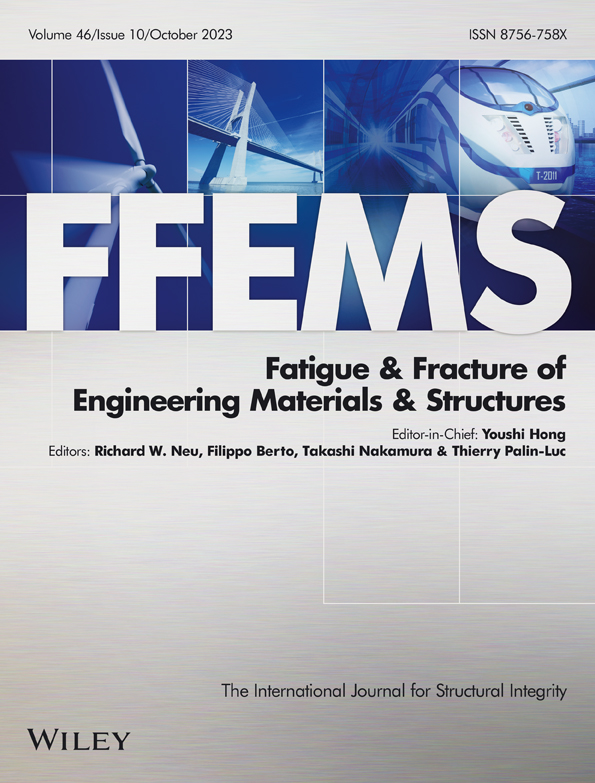Evaluation of finite high cycle fatigue life of hard steels using the elliptical curve method
Abstract
A direct relation where fatigue life can be determined as a function of macroscopic normal and shear stress amplitudes and is established. Using the Carpinteri & Spagnoli (C&S) criterion as a survey tool, elliptical-level curves in the domain were revealed and further generalized, providing means to determine for any given combination. Predictions obtained through the elliptical curve method (E) were compared with experimental observations, as well as with predictions obtained from adapted versions of popular fatigue criteria, namely, Findley (F), Matake (M), McDiarmid (McD), Susmel & Lazzarin (S&L), C&S, and Papadopoulos (P). The proposed model delivered predictions in fair agreement with experimental observations, and its predictive capability was seen to be the best among all the considered criteria. Finally, a slight bias toward conservativeness was attenuated with the introduction of an adjusting parameter, further improving the predictive capability of the model.
Highlights
- A direct relation between the fatigue life and applied combined stresses was obtained.
- Level curves of such function, independent of critical plane, present elliptical symmetry.
- Predictions via elliptical curve method present slight tendency toward conservativeness.
- An adjusting parameter is proposed further improving predictive capability.
Open Research
DATA AVAILABILITY STATEMENT
The data that support the findings of this study are available from the corresponding author upon reasonable request.




